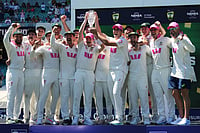In recent years, the ranking of professional colleges—particularly engineering institutions and business schools—has gained national prominence in India. With the country boasting the largest population of young people aged between 15 and 25, the pressure to choose the “right” college has never been more intense.
For many Indian families, a professional college degree is viewed as a definitive passport to success. Students, influenced by the ever-expanding reach of social media and online forums, often base their decisions on what is trending rather than what is fitting. Simultaneously, government funding bodies such as the Department of Science and Technology (DST) have started using rankings as a key eligibility criterion, further amplifying the significance of college rankings.
Overall Ranking Matrix
In the current scenario, there are several ranking systems available for the benefit of students and parents. Renowned magazines like Outlook and India Today publish annual college rankings, each with its unique methodology. Online portals like Career360 and recommendation-driven sites such as Shiksha and CollegeDekho offer tailored rankings, sometimes creating a different list for each user. Therefore, the same institution might appear at vastly different positions across these rankings, based on the parameters and priorities of the analyses.
While some systems focus on fundamental aspects such as faculty strength, infrastructure, and research facilities, others emphasise outcomes like placements, average salaries, or return on investment. This often results in metropolitan colleges—especially those in cities like Bangalore, Hyderabad, Chennai, and Delhi—getting an upper hand, owing to better industry linkage and access. Premier institutions like IIT-Kanpur or IIT-Kharagpur have, over the decades, established their own criteria and perception based on proven legacy.
While some systems focus on fundamental aspects such as faculty strength, infrastructure, and research facilities, others emphasise outcomes like placements, average salaries, or return on investments
It is vital for students and their parents to approach rankings from a personalised perspective. For instance, unless a student has an exceptionally high JEE rank, aiming for an institution like IIT-Bombay may be unrealistic. Each student must align their college choice with their rank bracket, interests, and long-term aspirations. Parents must remember that their child’s passion and strengths are more important than peer pressure or the desire to follow the crowd, a tendency that is often observed in tightly knit school groups making collective decisions.
Transparent Benchmarking
The National Institutional Ranking Framework (NIRF), established by the Ministry of Education in 2015, marks a major step forward in providing a credible and transparent ranking system in India. NIRF adopts a data-driven and measurable approach. It evaluates institutions across several parameters—teaching, learning, and resources; research and professional practice; graduation outcomes; outreach and inclusivity; and perception.
Over the past decade, the NIRF system has evolved and gained trust within the academic community. Institutions, students, faculty, and even employers have now gained a better understanding of its criteria and significance. A key strength of NIRF is its commitment to clarity: it publishes detailed guidelines and explanatory notes to ensure that institutions reporting their data do so with full understanding of its implications. While NIRF is not without its limitations, it is objective and offers students and parents a more grounded tool for decision-making.
Global Ranking Relevance
On the international stage, rankings are not just academic tools—they are commercial enterprises and instruments of global influence. The most cited global university rankings include those from U.S. News & World Report, QS World University Rankings, Times Higher Education (THE), and the Academic Ranking of World Universities (ARWU), often referred to as the “Shanghai Ranking.”
Factors like academic interests, career goals, learning environment, location preferences, and financial considerations should be checked while choosing the top-ranked institution
While these rankings hold significant weight globally, they do present challenges when applied to the Indian context. Many of their criteria—such as the percentage of international faculty and students or large-scale research funding—are not the same for Indian institutions, which are primarily focused on serving the domestic population. For e.g., global universities like the University of Toronto or Harvard enjoy greater resource facilities compared to institutions like IISc and the IITs, though they are among the best in India. It is essential to remember that global rankings may not reflect the actual value an Indian student derives from a local institution, especially in terms of relevance, accessibility, and affordability.
But these limitations do not pose a major threat, as Indian institutions have steadily improved their standing in these international rankings. This is a testament to ongoing reforms, greater focus on research output, and international collaborations.
The Way Forward
There is a growing realisation that for India, with its scale and diversity, a one-size-fits-all approach to evaluating institutions simply does not work. The understanding lies not in perfecting the ranking system but in interpreting the rankings wisely.
Students and parents must shift their focus from asking “What is the best college?” to “What is the best college for me?” Factors like academic interests, career goals, learning environment, location preferences, and financial considerations should be checked while choosing the top-ranked institution.
Moreover, teachers, school counsellors, and academic mentors must guide students through the maze of rankings and help them analyse what truly matters.
While college rankings—both national and international—play an increasingly important role in shaping educational choices in India, they should be viewed as informative rather than definitive. Rankings are tools—not destinations.
MORE FROM THIS ISSUE
Prof S Sadagopan Founder Director, IIIT-Bangalore



























